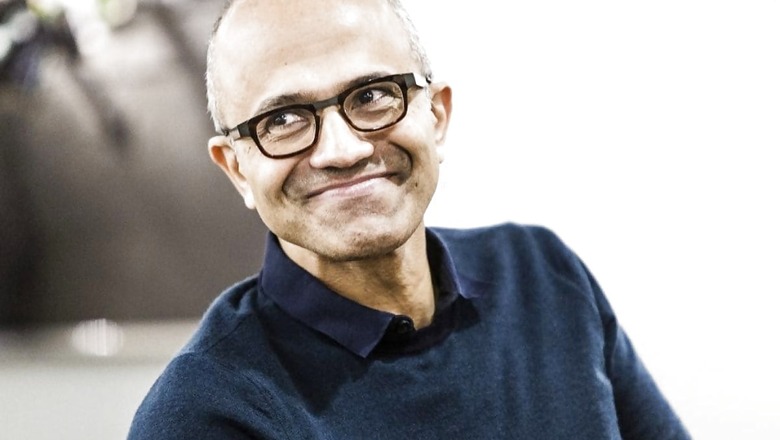
views
Microsoft have said that CEO Satya Nadella has been unanimously elected to the role of board chair, which means that the first time in two decades, the Microsoft CEO and chairman will be the same person. The last time that happened was with Bill Gates around, who stepped down as CEO in 2000. This is the biggest testament possible for Nadella’s leadership, since he took over as CEO in 2014. Yet again, Microsoft has one leader to look up to. “In this role, Nadella will lead the work to set the agenda for the board, leveraging his deep understanding of the business to elevate the right strategic opportunities and identify key risks and mitigation approaches for the board’s review,” says Microsoft’s official statement. The timing of this elevation is interesting too. The next big iteration of Windows is around the corner, expected to be called Windows 11.
When Nadella took the reigns as CEO in 2014, the direction the company was taking focused more on cloud services as the core and as the future of Microsoft. Yet, a product and a brand as strong as Windows, used by millions on their PCs around the world, wasn’t about to lose the limelight to cloud services. If you can’t beat them, join them? That is kind of the direction Windows took with Windows 10, released in 2015, and imagined as a service. Something that was always Live and updating. Unlike Windows 8.1, Windows 8, Windows 7 and the editions before that. They were comparatively static, with monthly updates and when you needed to move to the next big version, you had to buy it as a new product. A new piece of software. It was in 2015 when Microsoft called Windows 10 as the last version of Windows. You really couldn’t have imagined it would have gone this well for Microsoft.
While Windows 10 upgrades, offered free for the most part allowed for quick update, the end of support for Windows 7 in early 2020 saw PC shipments on an upward trajectory through all quarters of 2019. That meant PCs saw a full year of growth in 2019, the first time since 2011, driven by businesses and individuals upgrading desktops and laptops. According to data by online research firm Netmarketshare, as of May this year, Windows 10 has a 60.27% market share in the world of computing devices, by far and away the largest that still sees further fragmentation between older versions including Windows 8.1 and Windows 7.
And after 2019 clocked a full year of growth, 2020 also saw a significant boost in shipments, also pushed by the coronavirus pandemic and with millions switching to work from home and needing machines to actually get work done. Research firm Canalys reported that PC shipments clocked 297 million units through 2020, which is 11% higher than 2019. Microsoft’s own numbers told a tale of success. The company said in May that they had seen a 75% year-on-year increase in the time users are spending on Windows 10. Earlier, they had said in March that Windows 10 had clocked installs on 1 billion active devices globally, including PCs and Xbox consoles.
But what is in store for the future, and the update that the that Microsoft has teased as “the next generation of Windows” at the Build 2021 keynote, last month? It is expected that Microsoft will be implementing significant changes to how Windows works as a whole, including a visual overhaul. Microsoft has been working on new visual elements with Windows 10 over the past few months, including new system icons as well as File Explorer improvements, and clues could reside in the now-shelved Windows 10X operating system development. The Windows Store for apps and games, is also expected to receive an overhaul, in line with the company’s promise to app developers and creators, for a better app store experience on Windows PCs. “Our promise to you is this: we will create more opportunity for every Windows developer today and welcome every creator who is looking for the most innovative, new, open platform to build and distribute and monetize applications. We look forward to sharing more very soon,” Nadella had said during the keynote.
The success of Windows 10, over the past couple of years in particular, would have given Microsoft the data they needed to see to keep the focus on Windows as a product, and Windows as a service. The largest ever line-up of Microsoft’s own Surface computing devices, which includes the Surface Laptop Go, Surface Go 2, Surface Book 3, Surface Pro X, Surface Laptop 4 and the Surface Pro 7, indicates the focus is wholesome. Software and hardware, for those who need the latter too.
Read all the Latest News, Breaking News and Coronavirus News here.















Comments
0 comment